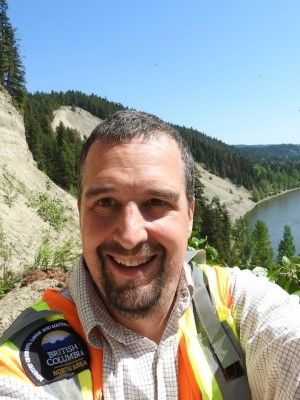NRESi Colloquium - Local geomorphic evidence for the rapid drawdown of glacial Lake Fraser - Brendan Miller

Glacial Lake Fraser was a large (~14,500 km2), Late Pleistocene – early Holocene proglacial lake that occupied the central interior of British Columbia. The lake formed during the decay of the last Cordilleran Ice Sheet and was rapidly drained by a large outburst flood ~11,500 years ago. Evidence for the outburst flood has been recorded within the former lake basin, along much of the 470 km length of the Fraser River located downstream of the former ice dam, and beyond into the Salish Sea. Within the former basin is found unusual channel-amphitheatre topography in glacial subaqueous fan and delta deposits. This channel-amphitheatre topography is characterized by branching networks of wide and nearly flat channels, up to 14 km long and 15-65 m deep, that terminate upstream in steep-walled, digitate amphitheatres. This topography formed by liquefaction flowslides induced by the rapid drawdown of glacial Lake Fraser during the outburst flood. This interpretation is founded on videos and high-resolution Digital Elevation Models of modern analogues, including the Mount Polley tailings dam failure and the intentional breaching of the 100-year-old Condit hydroelectric dam, and on a mechanistic analysis of liquefaction flowsliding caused by rapid drawdown. Similar landforms, that are interpreted to have formed during rapid drawdowns of large Late Pleistocene–early Holocene lakes, are present elsewhere in North America.
The Natural Resources & Environmental Studies Institute (NRESi) at UNBC hosts a weekly lecture series at the Prince George campus. Anyone from the university or wider community with interest in the topic area is welcome to attend. Presentations are also made available to remote participants through Zoom Webinar. Go to http://www.unbc.ca/nres-institute/colloquium-webcasts to view the presentation remotely.
Past NRESi colloquium presentations and special lectures can be viewed on our video archive, available here.